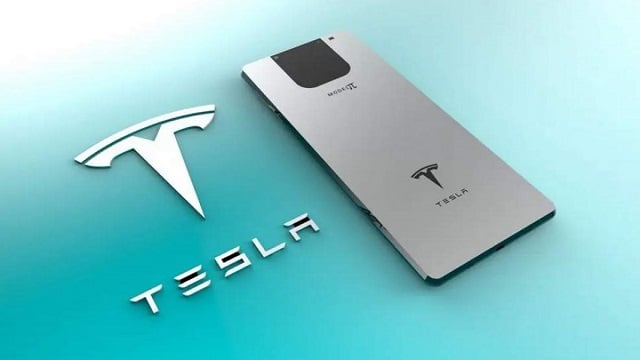Rob Cooling, a driving instructor based in Nottingham, has been teaching Britons the way to safely navigate a car along their country’s highways, byways and city streets since 2005. as long as automobiles with manual transmissions dominate the roads within the uk , for years that is the type he wont to teach his students.
But in 2017, he switched to a car with an automatic drive — an electrical vehicle (EV), specifically — and his business accelerated. “Once I started actively marketing that i used to be automatic, i used to be quickly overwhelmed with inquiries.” He now works off a permanent 12-month roll .
Meanwhile, 190 miles to the south on England’s south coast, the house James School of Motoring in Barton on Sea is additionally seeing an enormous increase in students wanting automatic lessons. Owner Rob James has 22 full-time, independent instructors who work for him on a franchise basis, but just one uses an automatic. Accordingly, that person, a woman, regularly has 25 students on her roll . “We’re adding two more automatic instructors later this summer,” James explains. “That should alleviate things a touch .”
The growing demand for automatic lessons that Cooling and James try to accommodate is simply one indicator that cars with manual transmissions are on a highway to obsolescence in Britain — a tremendous reversal of fortune for automatics during a country whose ethos for many years was that real drivers don’t use them.
Highest Technological Expertise within the World
SHANGHAI, CHINA – JULY 09: A staffer adjusts a robot developed by CloudMinds Technology Inc. during the 2020 World AI Conference at Shanghai EXPO Centre on July 9, 2020 in Shanghai, China.
But statistics from the driving force and Vehicle Standards Agency prove the trend is real. Last year, out of the 1.6 million driving tests it administered, 202,506 were taken in automatics, or 12.7% of the entire . which will appear to be a negligible amount, but it’s a rise of quite 90% from just five years ago.
And it’s likely that even more driving students would be taking their practical test in an automatic if only they might get lessons in one. In the U.K., new drivers take their trial in their instructor’s car, and therefore the overwhelming majority of instructors still use manual-transmission cars. “The demand cannot be met by available instructors,” James says.
The boom in automatic lessons is, however, something of a lagging indicator of the fast-growing popularity in Britain of cars that do not require a standard transmission and clutch.
Last year for the primary time, automatic cars outsold manuals, consistent with new-car sales statistics compiled by the Society of Motor Manufacturers and Traders. a complete of 915,812 automatics were purchased last year, or 56% of 1,631,064 cars sold. To make certain , due to the pandemic, overall sales were sluggish in 2020. But in 2019, when total sales hit 2,311,140, automatics accounted for 49% of them.
As recently as 2016, manuals comprised 65% of sales, albeit the trend toward automatics began slowly building in 2010. Before that, manuals regularly held around 85% of the market. That’s an enormous difference from the us , where cars with gear shifts made up just 2.4% of sales last year.
The change to automatics within the U.K. won’t be reversed, either. the worldwide auto industry has thoroughly embraced electrification. And EVs do not have a gearbox; they’re all automatics. The investment bank UBS forecasts that in 2025, 20% of cars sold worldwide are going to be EVs, revving to 50% by 2030 and possibly hitting 100% by 2040.
And Britain’s pivot toward EVs will likely be turbocharged by a government mandate that bans sales of latest gasoline or diesel cars after 2030. Stuart Masson, an analyst who operates The Car Expert, a well-liked automotive blog, predicts that EVs will start to dominate sales by mid-decade, and by the top of the last decade “there are going to be only a few petrol (gasoline) cars available, though some used cars will soldier on.”
Nevertheless, for the nonce , EVs comprise only around 10.7% of Britain’s new-car market.
So what’s behind the recent big U-turn toward automatics? It’s mainly driven by manufacturers going beat on automatics, and more U.K. buyers seeing them because the better option.
A generation ago, Masson says, automatics were sluggish, had poor fuel economy compared to manuals and price more. “The quality of driving was inferior.”
Today, however, while they still cost more, they are much more economical to drive, because of technologies like double-clutch transmissions and continuously variable transmissions (CVTs), both of which use computerized systems that automatically shift the transmission into the proper gear.
Automakers began promoting these newer sorts of automatics because in lab tests they provide the simplest fuel economy and lowest emissions, Masson says. “The process is so perfect it leads to optimal energy tests.” Initially, it had been mainly top-end marques that went beat on automatics, but they’re now becoming standard in mid-priced models, too. “Here within the U.K., a budget end of the market is where manuals still reign supreme, but that’s changing, too.”
For all those reasons, British consumers have also learned to like automatics. “The driving experience is extremely , very good,” Masson says. “And the performance is extremely , very good.”
For British driving instructors, however, the increasing demand for automatic lessons and therefore the coming dominance of EVs may be a quandary. For now, even students who decide to drive an automatic can prefer to take their lessons and test during a manual, because drivers licensed to drive one also are allowed to drive automatics. However, those that take their tests in an automatic can only drive automatics.
But at some point fairly soon instructors will need to plan to ditch their manual cars. If they are doing so too quickly, when overall demand for manual lessons remains robust, they might take a short-term financial hit. But if they wait too long, that demand could quickly dry up, leaving them cursed with a manual car they can not afford to ditch. “We’re not there yet, but we’ll be eventually,” James admits. “At what point does one switch? we do not know yet.”
For hardcore motoring enthusiasts, who enjoy the pleasures of shifting through the gears on long and winding roads, the death of the manual transmission are some things to bemoan.
But, as Masson notes, they’re now during a minority.
“Fewer and fewer people are that curious about the romance of driving for pleasure. And for those that drive tons in urban stop-and-go traffic, automatics are easier.”
Nevertheless, Masson suspects a couple of gasoline-fueled, manual-transmission sports cars will survive the approaching era of electrification. But like vinyl LPs, they’ll be a distinct segment product. For purists only.







